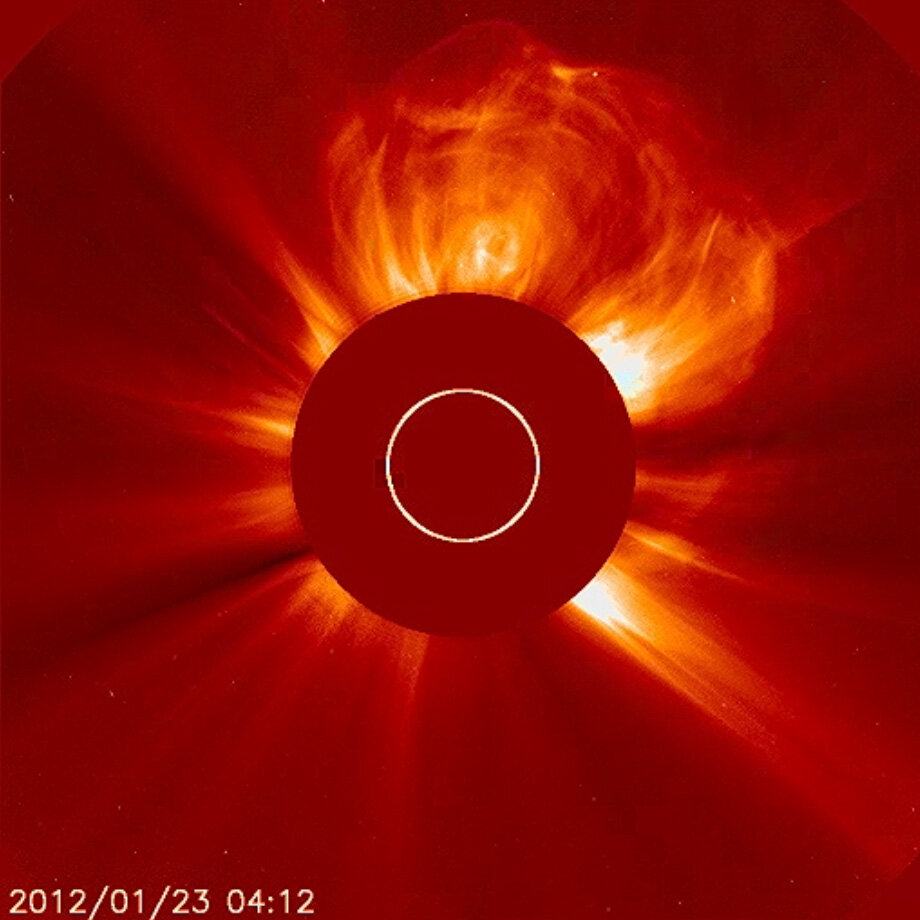Solar storm heading toward Earth
A large solar flare yesterday triggered a coronal mass ejection travelling at 1400 km/s that will reach Earth today. An energetic eruption of this level can disrupt satellites, so operation teams at ESA and other organisations are closely monitoring the storm.
A coronal mass ejection (CME) is a huge cloud of magnetised plasma from the Sun's atmosphere – the corona – thrown into interplanetary space. They often occur in association with a solar flare. This ejection was detected by the ESA/NASA SOHO and NASA Stereo spaceborne solar observatories.
CMEs can produce geomagnetic storms when they reach Earth, between two and six days after leaving the Sun.
The solar flare, at 03:59 GMT on Monday, also triggered the strongest stream of protons seen since 2005.

It is likely to cause a minor geomagnetic storm that is not expected to have any serious effect on ground infrastructure such as phone networks, but it might trigger auroral displays at high latitudes.
While the flare was stronger than average and the proton storm is the first strong one in seven years, no visible effects on the ground are expected.
Images of the Sun, the source of the flare and the CME are available via the SOHO mission page (see link at right). ESA's Proba-2 satellite is also returning images.





